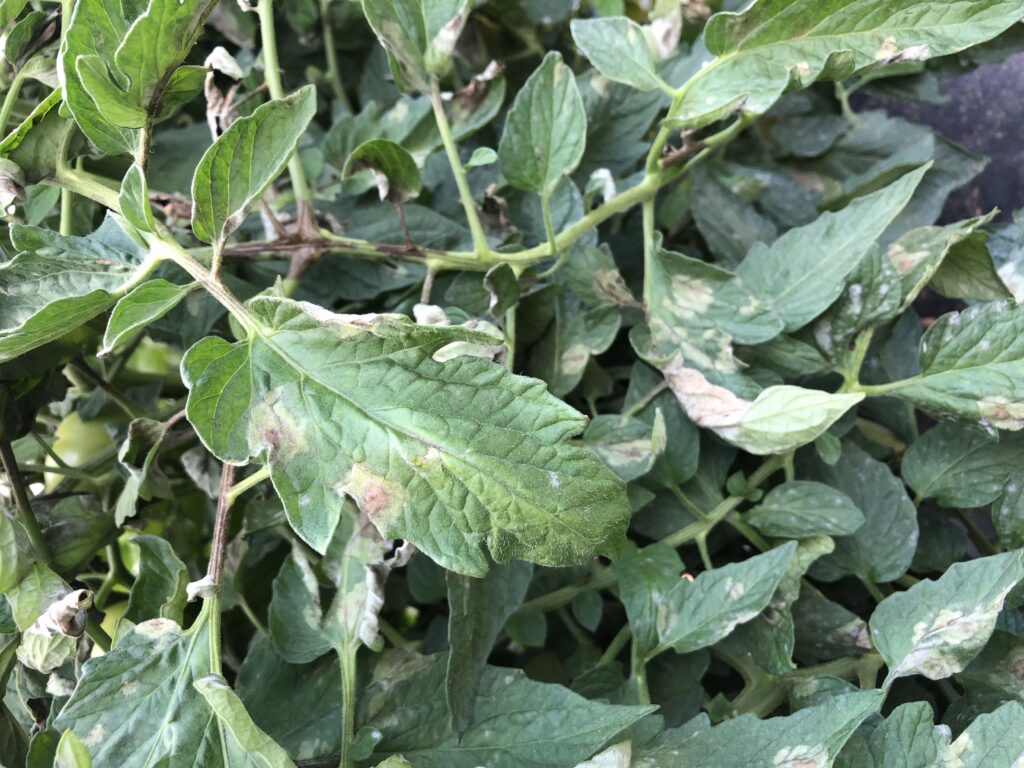
- #CHLOROTHALONIL FUNGICIDE TOMATO EARLY BLIGHT FULL#
- #CHLOROTHALONIL FUNGICIDE TOMATO EARLY BLIGHT SERIES#
Clemson U-USDA CES Slide Series, Bugwood. Of the fungicides listed in Strategy 6, consult the Organic Materials Review Institute (OMRI™) for appropriate organic copper products.Įarly blight on tomato fruit and foliage ( Lycopersicon)Įarly blight on tomato leaf ( Lycopersicon)Įarly blight on tomato leaf ( Lycopersicon). Using an appropriate organic fertilizer would be a viable organic approach to Strategy 2. Strategies 1, 3, 4, and 5 are strictly organic approaches. Apply at fruit set and reapply every 7–14 days. Effective fungicides include copper (Kocide), chlorothalonil (Bravo, Daconil), mancozeb, or maneb. Disease is more readily spread when plant foliage is wet.Ħ. Confine staking and picking to times when foliage is dry. Avoid planting eggplant or potatoes where tomatoes were last planted.ĥ. Pull weeds that compete for light, water, and nutrients, especially nightshade, horse nettle, and other weeds in the tomato family.Ĥ. Remove plant debris or till it into the soil. Do a thorough cleanup of the garden in the fall.
#CHLOROTHALONIL FUNGICIDE TOMATO EARLY BLIGHT FULL#
Water the plants regularly, but don't fertilize until the plants are well-established and in full blossom. Stressed plants are more susceptible to early blight. These varieties will require a less intensive management program than susceptible varieties.Ģ.

0 day PHI for chlorothalonil 5 day PHI for mancozeb. Varieties such as ‘Early Cascade’, ‘Floramerica’, ‘Jetstar’, ‘Manlucie’, ‘Supersonic’, and ‘Surecrop’ have some tolerance to early blight. Rotate out of fields with history of early blight or Septoria leaf spot. Spores thrive in moist, warm temperatures (80–90 degrees F) and can persist in partially decomposed garden waste for at least a year.ġ. Fungal spores enter a host through wounds in the plant cuticle. Spores are spread by wind and rain, but occasionally, flea beetles transmit this disease. This disease typically progresses from the base of the plant, upward.Įarly blight spores survive on old plant debris or in the soil. Early blight can result in extensive defoliation, exposing fruit to sunscald and reducing yields. The entire leaf may be killed and will drop off the plant.
#CHLOROTHALONIL FUNGICIDE TOMATO EARLY BLIGHT SERIES#
Eventually, the spots enlarge into a series of concentric rings surrounded by a yellow area. The appearance of circular or irregular dark spots on the lower, more mature leaves is one of the first symptoms of infection. Infection on leaves is the most common symptom.

Plants infected with the fungus can display collar rust on the stems, infected older leaves, and fruits that crack at the stem. Early blight can affect seedlings but is generally observed on older plants and is especially severe on plants of poor vigor. Early blight is a fungal disease, Alternaria sp., that occurs on tomatoes throughout North America.


 0 kommentar(er)
0 kommentar(er)
